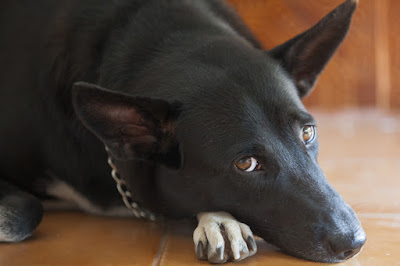Never let your dog walk you. You must be the one leading the walk, and keep the dog well-behaved throughout. In this article, you will find important information on dog training which every owner should know.
Dogs sometimes make mistakes because they can't do otherwise. It's your job to figure out why they can't. Consider an older dog, for example, that has been completely housebroken for years. If all of a sudden it starts relieving itself in the house something is wrong. The dog is likely sick and should be seen by a veterinarian.
Use food as a reward when training your dog. Many dogs will respond on a basic level to edibles. The reward of food will usually encourage them to continue on a food winning path. Vary the types of treats you get for your dog. Alternate fresh meat with packaged treats.
Spend time training your dog in a variety of locations and with different distractions. Once Fido sits reliably at home without distractions, teach him to sit outside, at the dog park, and in places with lots of people. This helps your dog obey commands reliably in any situation regardless of distractions.
Give your dog love every time you see him. This is especially important if you are upset with his behavior. If you punish him you can actually do the opposite of what you intend to do. He may become less likely to respond to your training. Be nice, even if he just did something that makes you made.
You have to be consistent with your dog's training. When everyone is participating in the training progress, you should be sure that each member of the family is applying the same rules and commands. Your puppy will learn quickly if you only use a few different words and always expect the same behavior.
If you want to train your dog, you should wait until it is at least six weeks old. A younger dog will not understand what you are expecting, and not be able to control itself enough to obey your commands. The first weeks of your puppy's life should be about creating a bond with you.
To train a dog how to act around people and guests in your home, it is crucial that the dog is socialized with other people. This contact with people, especially people who are new to your dog, will allow you to train the dog on how he should react. This is very useful to the training process.
When training a dog it is important to reward good behavior while punishing bad behavior. Careful effort to maintain a clear distinction between good and bad behavior will go a long way towards overall training of the dog. This will guarantee that the dog knows why it is being rewarded or why it is being punished.
A good dog training tip is to not spoil your dog by giving them dinner scraps all the time. The more you spoil your dog, the more you enable bad behavior such as begging. Instead, make treats part of a reward system. When your dog has been good, give them a treat as a reward.
The fastest way to train your dog to sit is to utilize positive reinforcement. If you command your dog to sit and he or she sits for a decent amount of time, then you can give the dog a treat. The dog will then recognize that when you say sit, if they succeed they will get a treat so they will eagerly sit longer and longer.
As you progress in training your dog, only give rewards for obedience the first time you give a command such as "come" or "sit". The dog will quickly learn that it is better to get the reward by obeying the first command than having you repeat it and not give the reward. Do praise the dog when it finally obeys, but save the treats for quick obedience.
Have the right equipment and use it properly. Learn how to put on a chain or nylon slip collar and use a standard 6 foot leash for most training. Do not yank or pull on the leash. Just give a quick tug and release when the dog ignores a command to come or heel. Soon just wearing the collar will be enough to remind the dog that you are the one in charge of the training session, and very few corrections should be needed.
Make sure you dog proof your home to reduce chewing or destructive behavior while you are away. Young dogs or bored dogs may chew when left alone just to have something to do. Take the time to close interior doors and put away items dogs like to chew before you leave to limit the opportunities for chewing while you are gone.
If you don't know what to do in order to train your dog, you may quickly be losing patience with your furry friend. However, after reading this article, you can use the information you have gleaned to teach your dog how to be a perfect family member.

